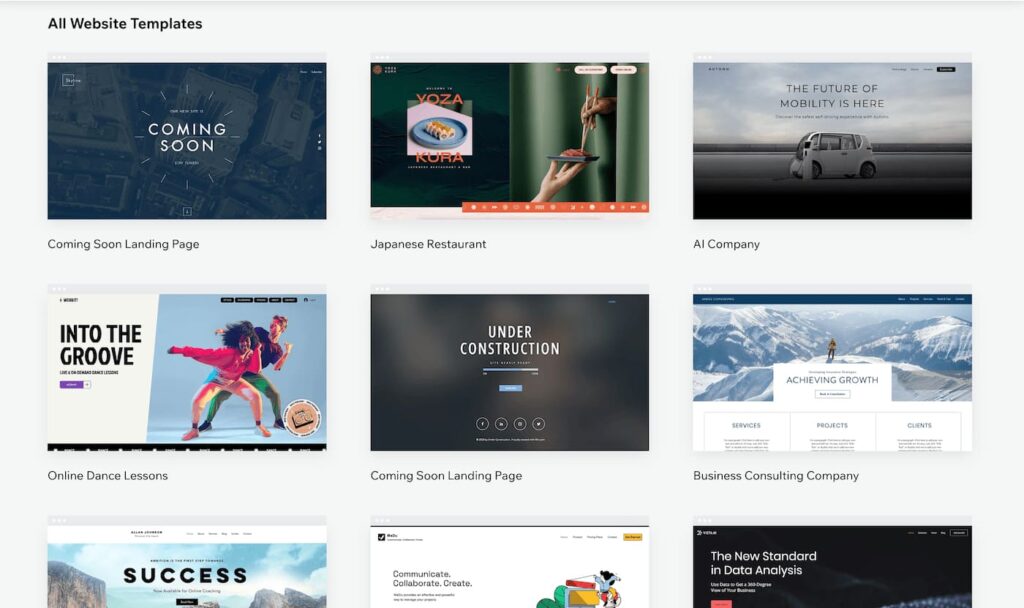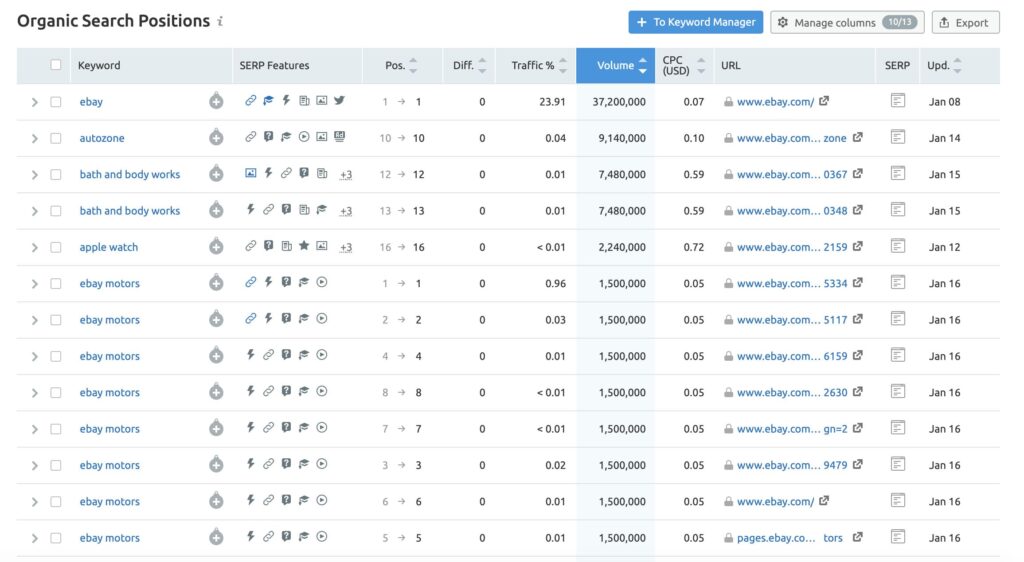How to Write Effective Website Content: SEO Tips & Content Strategy
Your content should be the top concern when creating a website. If a website’s layout or content is poor, more than one-third of users will quit using it.
This serves as proof that material for a successful website needs to be appealing to both search engines and online visitors, yet doing so might be daunting.

Don’t be overwhelmed; we’ve addressed every aspect of how to create content for websites that improves their look, readability, and SEO efficiency for new properties.
What is Website Content?
This includes a web page’s or website’s text, images, and audio. A website may contain instructional or informational content. Content creation with an interesting goal encourages return visitors, boosts social media sharing, and raises search rankings.

Definitions of website content might be more technical and encompass all the components that enhance the user experience (UX) and make a website accessible. Broadly speaking, interactive elements like hyperlinks, web forms or surveys, navigation buttons or menus, and accessibility components like alternative language for images are also considered to be part of the content.
Content Strategy for Effective Website Writing
User experience, web design, and content marketing are all related to the content plan, which is a relatively recent specialty field in digital marketing.
A comprehensive approach to content production and implementation is crucial for both small and large businesses; a successful strategy for website content necessitates close collaboration across all peer disciplines.
Also to fulfill your objectives, engage and educate the audiences, and produce great website content, use the following rules, pointers, and not-so-subtle recommendations.
Understanding Your Audience
In other words, even though you may be well-versed in the subjects covered in your website content, you must remember that clients may not be. And when it comes to content writing, you should make sure that your message is compatible with the language fluency of your target audience.
When the content producer has certain goals, the best material fits these demands. Reviewing released information regularly and keeping an eye on how users interact with it will be necessary. Verifying that it is still correct and relevant is encouraged.
Defining Your Goals
Additionally, you must specify if the article’s primary goal is to educate, amuse, or convince readers to make a purchase. This will assist you in determining the proper strategy as well as the suitable word choice and terminology.
To gain trust, give them a reason to come back, and gain the favor of any search engine, you need to build brand authority, offer accurate insights, and ideally bring tangible to the table.
Would you like a customer to buy a product from a particular website? Then, make sure the material on that page is created to persuade them that it is worthwhile to purchase and to gently guide them in the proper direction.
Keyword Research and SEO
A superb website with meaningful, targeted content is visually appealing and fascinating, but it won’t gain you the attention you’re looking for. Pushing target content higher in organic search must be your priority if you want visitors to locate it.

The use of several strategies to raise the website’s position in specific keyword-driven search results is known as search engine optimization (SEO).
Start by conducting keyword research to find the most often used terms related to the website’s theme, like “meditation practice.” After that, put them in context — even mentioning them in the alternative text of visuals, post metadata, and descriptions.
Creating High-Quality Content
Always remember your audience, messages, and objectives while you are first writing. Visitors will most likely hit the back button as soon as they arrive at the website if your introduction or product description is generic. Either make a compelling opening statement or interact with readers directly and pique their interest with a series of questions.
Furthermore, content writing that uses arrogant language and industry-specific jargon confuses readers rather than impresses them. Any content on the internet should be written in an approachable style, much like how you speak to people in everyday life.
Use Call to Action
An enticing button, link, picture, or other type of visual that encourages a visitor to become a participant or customer is called a call to action. Content will be much less successful at turning visitors into customers if you publish excellent content but lack a call-to-action.

For instance, the CTA’s microcopy can say, “Subscribe for a newsletter,” if your objective is to encourage readers to subscribe to the newsletter. “Discover more products” might be the CTA if you want them to buy from you. You could arouse feelings in this way, but it’s important to stick to the brand’s identity to remain genuine.
Content Promotion and Distribution
Customer endorsements, reviews, or even partner brand names and images that are pertinent to you on the website can significantly increase conversions. Therefore, including social evidence helps allay any doubts and provides prospective buyers with the extra encouragement they require to convert.
Make sure the social proof you employ has a direct bearing on the issues and preferences of the target audience. Use images or videos of actual consumers or influencers using the product or service to add visuals. Regularly upgrading your social proof will help it stay current and genuine.
Analyzing and Refining Your Strategy
To write content, it’s necessary more than just post it and forgetting about it. You must regularly review the goal and previous postings and present current information. In this manner, it assists you in producing qualified content that stays current and guarantees that the same article will continue to attract fresh readers over time.
A content audit, which assesses content assets to determine their performance, is an essential step in honing the content strategy. You may make successful adjustments to future planning and writing processes and make sure that words are lucrative once the team evaluates how well the content fits with the interests of the public.
Writing Content for Better Search Rankings
Google’s ranking algorithms are built to deliver the most relevant and helpful results in the quickest amount of time, sorting through web pages to satisfy search intent. Google evaluates the usefulness and relevancy of a response to a request using computational algorithms that take into account several variables.

It’s really difficult to rank higher in search results. However, you can produce valuable, relevant, and optimized content that pleases both the audience and the algorithms if you match your content distribution with SEO objectives.
Writing Tips for SEO-Friendly Website Content
Write content plans that feature comprehensive collections of goal-driven, user-centered decisions around the content you provide. It entails delivering the appropriate material to the appropriate audience at the appropriate moment, ideally covering real SEO tactics to increase rankings.
You may increase a website’s exposure in organic search results by promoting the intended articles with the correct SEO content approach. It involves a variety of strategies, including backlink reclamation, technical SEO, and hunting for relevant keywords.
Keyword Optimization
This procedure increases the general exposure of the online domain by informing Google that your content corresponds with the searches you have selected.

By deciding which keywords to use on which pages, you may avoid utilizing the same terms on several web pages, which confuses Google. By allocating particular terms to individual pages, you may map the keywords and make your site’s structure and content more readable.
Compelling Headlines and Titles
Google can better index the content of the website by using titles for key pages like the home page, service area pages, and summary pages. They ought to contain location-specific terms that best characterize the company.
Although headlines can be more imaginative than page titles, be sure that your keyword appears in all of your material, including headers and subheadings. However, if you use too many terms, algorithms will consider the page to be spam.
Engaging and Informative Style
Using a range of formats to keep the audience interested is one of the best techniques to write content that is interesting. Information resources must be valuable, optimized for various channels, and tracked to help you fine-tune your approach.
To write concise, understandable information that successfully conveys your story, use short paragraphs, and bullet points eventually. To guarantee a polished end product, edit it for readability and clarity, get rid of repetition, and solicit feedback.
Regular Content Updates
Some articles may address current events that are out of date over time, or they may have a title that mentions a certain year. In certain situations, the rest of the blog post may be timeless; the date, for instance, has to be updated. Other than totally rewriting a post, there isn’t much you can do when the content quality is poor. The foundation has already been laid, so go ahead and amend your post to address the low quality of the content.
Linking related pages
Any link pointing to another page on the website from one page on your property is considered an internal link. Links are used by both search engines and visitors to locate material on the website. Links let users navigate and locate the material they want to read, and without links, they won’t display a page.
You should contextually link your articles when you’ve written about a particular subject because this will let Google know that the posts are related. Links can be added after a post or from lines in the article.
Editing and Improving Your Website Content
Making modifications to the material contained in pages, styles, paragraphs, or templates is known as editing a website. It is more likely to involve altering entire portions or even eliminating an entire page or article component, yet it can be as easy as adding new videos or changing the typeface.
Choosing where to make changes is the most difficult aspect of content writing. Because technology is developing so quickly, new features and configuration options are constantly being added to websites. However, depending on what you want to change and how much editing is required, there are a few ways to change an article.
Proofreading and Refining Your Content
Is the copy sounding correct? Proper formatting is only one aspect of brand voice. If the copy you’re editing has too much repetition, remove it to make it flow better. It is rarely essential to proofread each output more than once, so don’t let the process go on forever.
Eliminating errors and improving readability
The practice of content writing and further editing improves the writing’s readability and helps readers relate to the content more easily. A sentence’s meaning might be altered by improper punctuation, leaving readers perplexed or misinterpreting the attitude. You can remove uncertainty and guarantee that your intention is communicated correctly by honing these resources.
Ensuring consistency in tone and style
Users may become disengaged from the experience if there is inconsistency in the tone or tenseness. A copy editor is adept at identifying contradictions and making sure the language is consistent throughout. This keeps the reader from getting sidetracked by small inconsistencies and lets them concentrate on the material.
Updating and Refreshing Content for SEO
Whether it’s a single page or a collection of connected pages on a topic, a content refresh entails updating and optimizing the material on an existing website. This may entail updating metadata, deleting out-of-date narratives, introducing fresh content, and making sure the content reflects the intent of modern searchers.

Updates affect the organic traffic and rankings and offer chances to make user experience investments. It is also an essential component of a sound content marketing plan.
When and why to update old content
Content will satisfy the needs of your target audience if it stays in line with current search intent, also known as user intent. For website content updates, adopt an editorial schedule; it will help you stay organized and ensure timely refreshes. Prioritize evergreen content and high-impact pages like landing pages, as these are essential components of the SEO strategy.
Keep relevant to search trends
Regular research and optimization are part of the process, with an emphasis on pertinent keywords that correspond with user search terms. Examining People Also Ask excerpts can reveal important information about frequently asked issues and problems. By maintaining the content’s competitiveness and future value, it aids larger digital marketing initiatives.
FAQ
What is the recommended frequency for updating website content?
Generally speaking, content updates should occur every three months. For the majority of organizations, this strikes a reasonable compromise between updating older material to keep it current and relevant for users and yet being able to publish brand-new information online.
What strategies can be used to optimize website content for search engines?
You can improve your position in organic search and optimize for SEO goals your website content by using both on-page and off-page optimization strategies, such as hunting for keywords. Title tag and meta description optimization. It also considers header tag usage, developing a user-friendly URL structure, content optimization, high-quality backlink building, and social media utilization.
How can you track and analyze the effectiveness of your website content?
Use tools such as Search Console and Google Analytics 4 (GA4) to track the effectiveness of the website. Keep an eye on data like user engagement, bounce rate, and page load times. To guarantee seamless navigation, routinely check for and repair broken connections.
What are the key differences between writing website content and other forms of writing?
Content writing encompasses any type of content that has been written. While writing is a profession in and of itself, article writing is merely a subset of it. One subset of the vast industry that offers target sorts of content writing is the one that focuses on web content.





